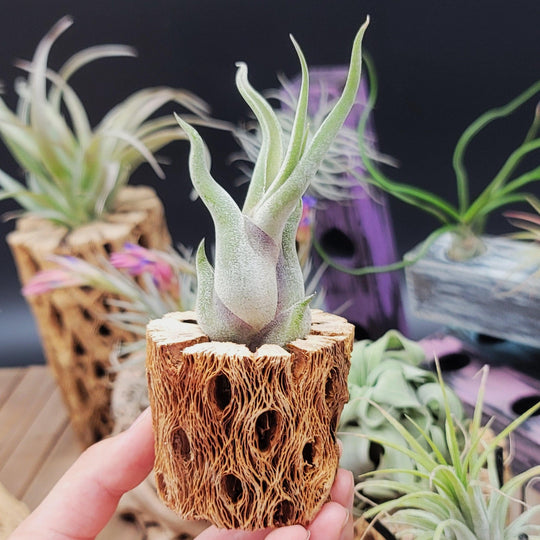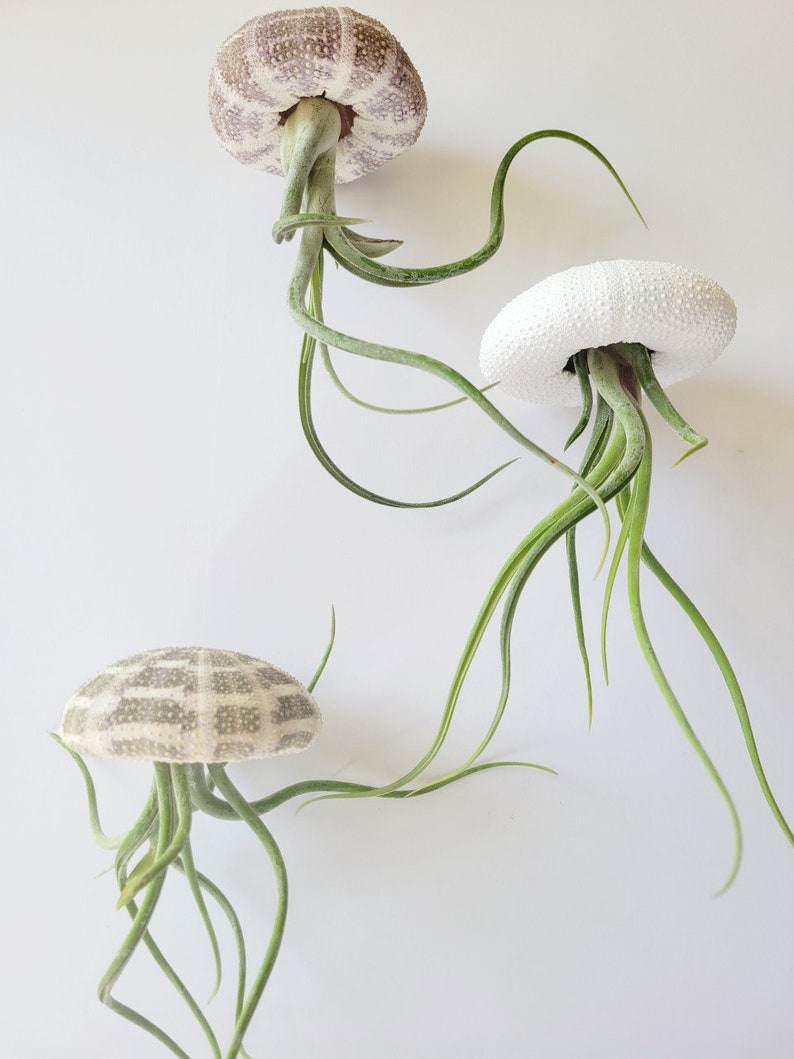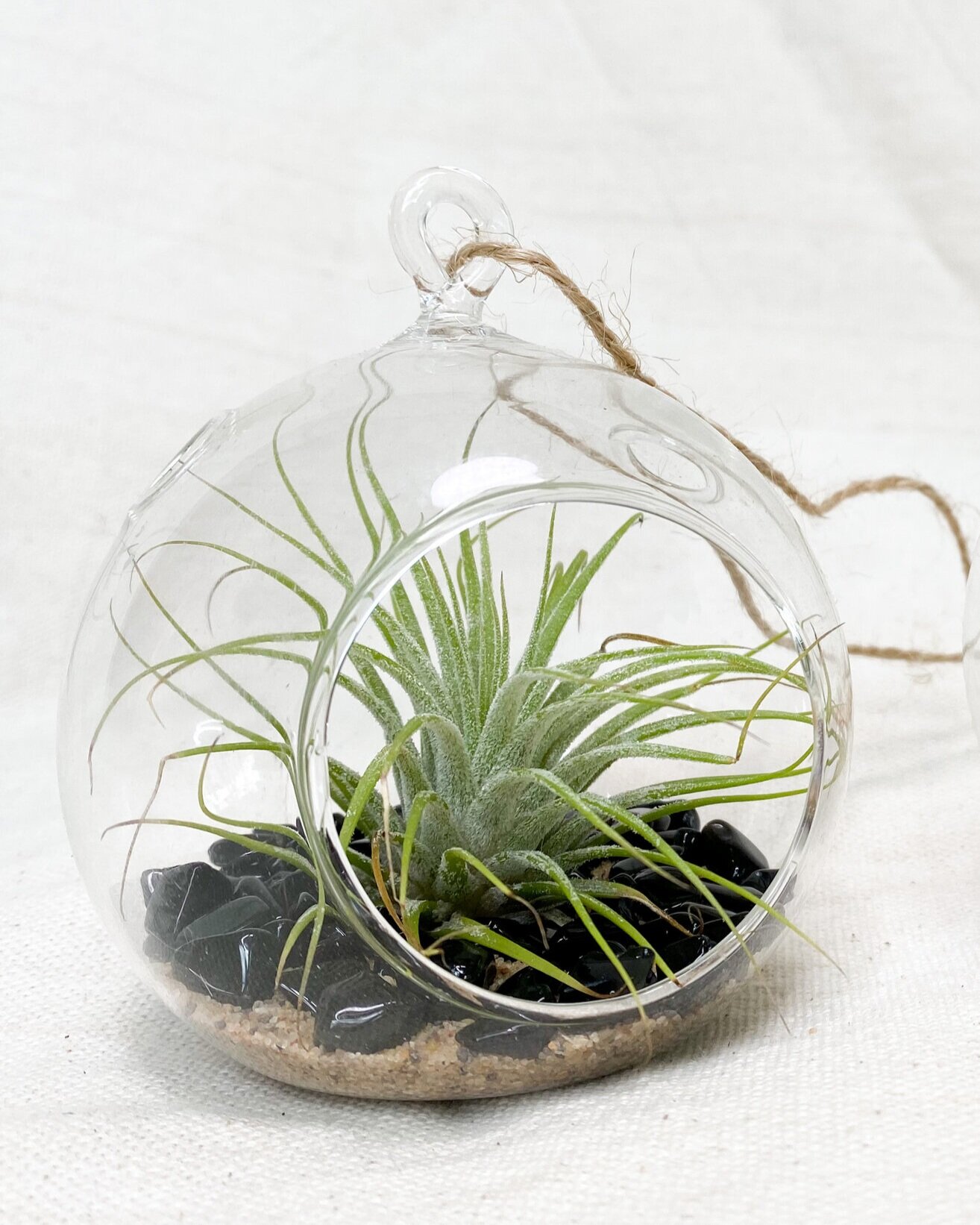Caput Medusae Jellyfish Plant

Imagine having a mesmerizing plant that resembles the captivating tentacles of the mythical Medusa.
Introducing the Caput Medusae Jellyfish Plant, a stunning and distinctive species that will undoubtedly become the centerpiece of your indoor garden.
In this article, we will explore the captivating features of this plant, its versatile usage, and the benefits it brings to your living space.
Additionally, we will delve into the essential growing conditions, step-by-step propagation methods, effective care techniques, and troubleshooting tips to ensure your Caput Medusae thrives.
Get ready to embark on a journey of greenery and enchantment!
Key Features
Scientific Name: Euphorbia caput-medusae
Alternative/English Names: Medusa's Head, Medusa Plant, Jellyfish Plant
Color: Green stems with reddish tints, yellowish-green flowers
Taste: Not typically consumed, as the plant is considered toxic
Height: 2-3 feet (0.6-0.9 meters)
Spread: 1-2 feet (0.3-0.6 meters)
What is Caput Medusae?
The Caput Medusae, or Medusa's Head, is a captivating and unique succulent plant native to South Africa. Its striking appearance is characterized by a densely packed, tangled mass of green stems with reddish tints, resembling the serpentine tresses of the mythological Gorgon, Medusa. This unusual growth habit has earned it the descriptive common names "Medusa Plant" and "Jellyfish Plant."
Despite its intriguing appearance, the Caput Medusae is considered toxic and should be handled with caution. Like many members of the Euphorbia family, it contains a milky sap that can cause skin irritation and other adverse reactions if ingested or exposed to the eyes or mucous membranes.
In terms of cultivation, the Caput Medusae is a low-maintenance succulent that thrives in well-draining soil and bright, direct sunlight. It is drought-tolerant and can withstand periods of neglect, making it a suitable choice for those with a busy lifestyle or forgetful gardening habits.
While the Caput Medusae is not typically consumed, it is a highly sought-after ornamental plant prized for its unique form and striking appearance. Its ability to capture the imagination of plant enthusiasts and add a touch of exotic intrigue to any garden or indoor space has made it a popular addition to many collections.
Growing Conditions for the Caput Medusae Jellyfish Plant:
To ensure the healthy growth and vitality of your Caput Medusae Jellyfish Plant, it is crucial to provide the optimal growing conditions. Here are the key factors to consider:
Sunlight:
The Caput Medusae thrives in bright, indirect light.
Place it near a window where it can receive filtered sunlight for a few hours each day.
Avoid exposing it to direct sunlight, as it can scorch the delicate foliage.
Temperature:
Caput Medusa plant prefers warmer temperatures between 60°F and 80°F (15°C - 27°C).
Protect it from extreme cold or hot drafts, as they can harm its overall health.
At any cost, ensure that the plant is not placed at a temperature that is lower than 12°C.
Humidity:
Caput Medusae plants thrive in environments with moderate humidity levels.
Mist the plant's foliage with water once or twice a week to maintain adequate moisture levels.
Alternatively, you can place the plant on a pebble tray filled with water to enhance humidity.
Watering:
Watering air plants like the Caput Medusae differs from traditional potted plants. Instead of soil, these plants absorb moisture through their leaves.
To water your Caput Medusae, thoroughly mist the foliage with room temperature water 2-3 times a week.
Ensure that the water reaches the base of the leaves and allow any excess water to drain off.
Adjust the watering frequency based on your climate and the humidity levels in your home.
Propagation Methods and Planting Steps:

Propagating the Caput Medusae Jellyfish Plant can only be done through stem cutting, which is an exciting endeavor that allows you to expand your collection or share the beauty of this plant with others.
Stem Cutting Propagation:
- Start by selecting a healthy mature plant with multiple offsets or pups.
- Use clean, sharp scissors to carefully remove the offsets from the parent plant.
- Ensure that each pup has its own set of leaves.
- Allow the cuttings to air dry for a few hours to prevent rotting.
Planting Steps:
- Once the cuttings have dried, place them in a bright, well-ventilated area for a couple of days to encourage callus formation.
- Prepare a suitable planting medium, such as a mixture of orchid bark, sphagnum moss, and perlite.
- Gently press the cut ends of the pups into the planting medium, ensuring they are securely anchored.
- Mist the planting medium and the base of the leaves with water to provide moisture.
- Place the newly planted cuttings in a location with bright, indirect light and maintain moderate humidity.
- Avoid watering the pups for the first few weeks to prevent root rot.
- After a few weeks, you can resume regular misting and watering routines.
Care and Maintenance:
Caring for the Caput Medusae Jellyfish Plant is relatively simple. By following these care tips, you can ensure its long-term health and vitality:
Air Circulation:
- Provide adequate air circulation to prevent the buildup of excess moisture, which can lead to rot.
- Avoid placing the plant in closed terrariums or containers without proper ventilation.
Fertilization:
- The Caput Medusae plant benefits from regular fertilization to support its growth.
- Use a diluted, balanced, water-soluble fertilizer specifically formulated for air plants.
- Apply the fertilizer once a month during the growing season (spring to fall).
Trimming:
- Remove any dead or yellowing leaves by gently pulling them from the base of the plant.
- Regularly inspect your plant for signs of pests, such as mealybugs or aphids. If detected, treat the infestation promptly.
Display and Arrangement:



- Get creative with your Caput Medusae by displaying it in various ways.
- Consider mounting it on driftwood, placing it in a hanging basket, or incorporating it into a terrarium.
- Ensure that the plant is securely attached or positioned to prevent it from falling and getting damaged.
Conclusion:
The Caput Medusae Jellyfish Plant is an extraordinary addition to any indoor garden, captivating onlookers with its unique form and vibrant foliage.
By providing the right growing conditions, following proper propagation methods, and implementing effective care techniques, you can successfully cultivate and maintain this enchanting plant.
Embrace the whimsical beauty of the Caput Medusae and let it bring a touch of elegance and fascination to your living space.
Start your planting journey today and watch as this extraordinary plant thrives under your care.
Frequently Asked Questions (FAQs):
Q. How do I know that my MEDUSAE PLANT needs to be watered
Look closely at the leaves of the plant. If it has started to shrivel or curl, it means that the plant requires watering.
Q. Can I grow the Caput Medusae outdoors?
A. The Caput Medusae is primarily an indoor plant. It thrives in controlled environments where it can receive adequate light and protection from extreme weather conditions.
Q. Does it require soil to grow this plant?
A. Unlike most plants, the Caput Medusae does not require soil for growth. It is an epiphytic plant that naturally attaches itself to trees or rocks, using its leaves to absorb moisture and nutrients from the air. Therefore, there is no need to provide potting soil for this unique plant.
Q. How often should I mist the Caput Medusae?
A. Mist the plant's foliage 2-3 times a week, ensuring thorough coverage. Adjust the misting frequency based on the humidity levels in your home and the plant's overall moisture requirements.
Q. Can I attach the Caput Medusae to different mounting surfaces?
A. Absolutely! The Caput Medusae can be attached to various mounting surfaces, such as driftwood, cork bark, or even decorative stones. Be creative and experiment with different arrangements to showcase its unique beauty.
Q. What is the average lifespan of the Caput Medusae Jellyfish Plant?
A. With proper care, the Caput Medusae can live for several years. It may even produce offsets or pups, allowing you to expand your collection or share the joy of this plant with others.
Q. What is special about CAPUT MEDUSAE air plant flowers?
A. The Caput Medusae flowers in early summer in its natural habitat. If cultivated properly, it will burst into multiple red inflorescences during spring or early summer.
The inflorescences are unbranched and digitate. On these, tubular-shaped violet-pink or bluish-red Tillandsia caput-medusae blooms appear.
Slowly, these flowers convert into offsets or medusa air plant pups that can be used for propagation.
Q. Can Caput Medusae be prone to having pest and diseases or problems?
A. Yes, Caput Medusae air plants can be susceptible to pests, diseases, and problems.
To prevent issues, provide proper care by ensuring adequate air circulation, avoiding overwatering, and regularly inspecting the plant for signs of pests or diseases.
If problems occur, you can treat them by manually removing pests, using insecticidal soap, adjusting the plant's care routine for fungal or bacterial infections, and improving drainage to prevent root rot.
Early detection and proactive measures are important for maintaining the health of Caput Medusae air plants.
